Cell-fate transition and determination analysis of mouse male germ cells throughout development
- PMID: 34824237
- PMCID: PMC8617176
- DOI: 10.1038/s41467-021-27172-0
Cell-fate transition and determination analysis of mouse male germ cells throughout development
Abstract
Mammalian male germ cell development is a stepwise cell-fate transition process; however, the full-term developmental profile of male germ cells remains undefined. Here, by interrogating the high-precision transcriptome atlas of 11,598 cells covering 28 critical time-points, we demonstrate that cell-fate transition from mitotic to post-mitotic primordial germ cells is accompanied by transcriptome-scale reconfiguration and a transitional cell state. Notch signaling pathway is essential for initiating mitotic arrest and the maintenance of male germ cells' identities. Ablation of HELQ induces developmental arrest and abnormal transcriptome reprogramming of male germ cells, indicating the importance of cell cycle regulation for proper cell-fate transition. Finally, systematic human-mouse comparison reveals potential regulators whose deficiency contributed to human male infertility via mitotic arrest regulation. Collectively, our study provides an accurate and comprehensive transcriptome atlas of the male germline cycle and allows for an in-depth understanding of the cell-fate transition and determination underlying male germ cell development.
© 2021. The Author(s).
Conflict of interest statement
The authors declare no competing interests.
Figures
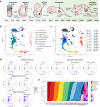
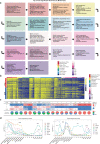
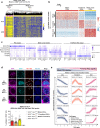
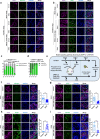
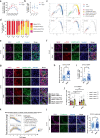


Similar articles
-
Dynamic regulation of mitotic arrest in fetal male germ cells.Stem Cells. 2008 Feb;26(2):339-47. doi: 10.1634/stemcells.2007-0622. Epub 2007 Nov 15. Stem Cells. 2008. PMID: 18024419
-
Npat-dependent programmed Sertoli cell proliferation is indispensable for testis cord development and germ cell mitotic arrest.FASEB J. 2019 Aug;33(8):9075-9086. doi: 10.1096/fj.201802289RR. Epub 2019 May 14. FASEB J. 2019. PMID: 31084574
-
The mammalian doublesex homolog DMRT1 is a transcriptional gatekeeper that controls the mitosis versus meiosis decision in male germ cells.Dev Cell. 2010 Oct 19;19(4):612-24. doi: 10.1016/j.devcel.2010.09.010. Dev Cell. 2010. PMID: 20951351 Free PMC article.
-
Regulation of the mitotic and meiotic cell cycles in the male germ line.Recent Prog Horm Res. 2002;57:75-101. doi: 10.1210/rp.57.1.75. Recent Prog Horm Res. 2002. PMID: 12017557 Review.
-
Sex Determination in the Mammalian Germline.Annu Rev Genet. 2017 Nov 27;51:265-285. doi: 10.1146/annurev-genet-120215-035449. Epub 2017 Aug 30. Annu Rev Genet. 2017. PMID: 28853925 Review.
Cited by
-
Single-cell multi-omics sequencing of human spermatogenesis reveals a DNA demethylation event associated with male meiotic recombination.Nat Cell Biol. 2023 Oct;25(10):1520-1534. doi: 10.1038/s41556-023-01232-7. Epub 2023 Sep 18. Nat Cell Biol. 2023. PMID: 37723297
-
Transgenerational Epigenetic DNA Methylation Editing and Human Disease.Biomolecules. 2023 Nov 22;13(12):1684. doi: 10.3390/biom13121684. Biomolecules. 2023. PMID: 38136557 Free PMC article. Review.
-
Overview of single-cell RNA sequencing analysis and its application to spermatogenesis research.Reprod Med Biol. 2023 Jan 28;22(1):e12502. doi: 10.1002/rmb2.12502. eCollection 2023 Jan-Dec. Reprod Med Biol. 2023. PMID: 36726594 Free PMC article. Review.
-
Systematic screening and dynamic profiling of germline regulatory pathways and spermatogonial surface markers in a bivalve mollusc.Comput Struct Biotechnol J. 2025 Jan 27;27:519-530. doi: 10.1016/j.csbj.2025.01.023. eCollection 2025. Comput Struct Biotechnol J. 2025. PMID: 39944128 Free PMC article.
-
Single-cell long-read Hi-C, scNanoHi-C2, details 3D genome reorganization in embryonic-stage germ cells.Nat Struct Mol Biol. 2025 Jul 4. doi: 10.1038/s41594-025-01604-7. Online ahead of print. Nat Struct Mol Biol. 2025. PMID: 40615573
References
-
- Ewen KA, Koopman P. Mouse germ cell development: from specification to sex determination. Mol. Cell Endocrinol. 2010;323:76–93. - PubMed
-
- Ohinata Y, et al. Blimp1 is a critical determinant of the germ cell lineage in mice. Nature. 2005;436:207–213. - PubMed
-
- Ohinata Y, et al. A signaling principle for the specification of the germ cell lineage in mice. Cell. 2009;137:571–584. - PubMed
-
- Hayashi K, Ohta H, Kurimoto K, Aramaki S, Saitou M. Reconstitution of the mouse germ cell specification pathway in culture by pluripotent stem cells. Cell. 2011;146:519–532. - PubMed
-
- Nakaki F, et al. Induction of mouse germ-cell fate by transcription factors in vitro. Nature. 2013;501:222–226. - PubMed
Publication types
MeSH terms
Substances
LinkOut - more resources
Full Text Sources
Molecular Biology Databases

